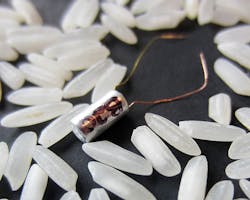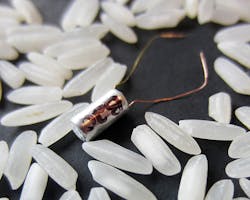Tiny battery lets researchers track salmon
’ researchers in Washington State have been surgically implanting battery-powered transmitters into salmon to track and monitor their moments through rivers and the ocean. But those batteries were too big and weak to meet some of the researchers’ goals. So engineers at nearby Pacific Northwest National Laboratory downsized the battery.
The engineering team used carbon and lithium chemistry to create a laminated combination of carbon fluoride (the cathode), a separating material, and lithium (the anode). They rolled up and encapsulated the layers of material to cut down its size. Rolling it up also let them have a large active surface area in a smaller package. The increased surface area, in turn, keeps the battery’s impedance from being too high, a traditional problem with small batteries.
The new battery is only 70 mg, less than half the previous battery’s weight at 135 mg, and measures 6 x 3 mm. The smaller size lets researchers inject the battery and track younger fish whose movements are crucial to the studies. And injections are faster, easier on the fish, and less costly.
The battery has an energy density of about 240 W/kg, which compares to about 100 W/kg for commercially available silver-oxide button batteries. This lets the battery power an acoustic signal strong enough to be heard in fish-tracking studies despite the sound of nearby dams. It can send these 744-msec signals out every 3 sec for three weeks, or about every 5 sec for a month. The battery’s chemistry is also better in cold water than currently used batteries, sending clearer signals at lower temperatures.

